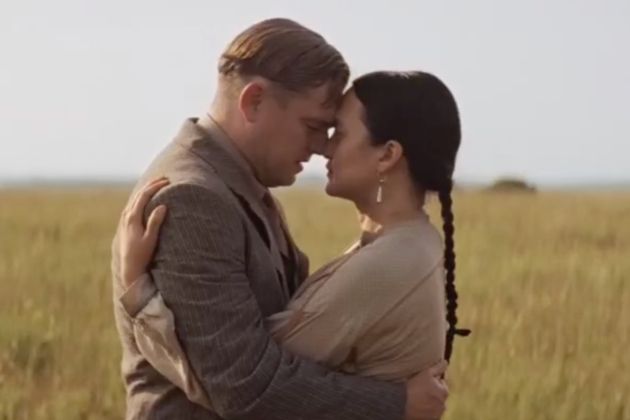Michael Cieply: My Wish For ‘Killers of the Flower Moon’ — A Bit of Real Oklahoma
- Oops!Something went wrong.Please try again later.
- Oops!Something went wrong.Please try again later.
- Oops!Something went wrong.Please try again later.

For those who treasure a sense of place in movies, the new trailer for Martin Scorsese’s Killers of the Flower Moon, a film set for release by Paramount in partnership with Apple Original Films in October, brings a flicker of hope. (Pete Hammond’s Cannes review is here.)
True, it looks a little stagey, like Gangs of New York but out on the prairie. Still, for a few fleeting seconds—wedged among a scowling De Niro, a maundering DiCaprio and all those mortified Native people–tantalizing traces of the real Oklahoma peep through. Acres and acres of buffalo grass. Old brick facades. The kind of sky that hangs over Pawhuska and Bartlesville, where a 1982 tornado marched right up Frank Phillips Blvd. to the doorstep of Phillips Petroleum.
More from Deadline
Maybe, just maybe, this film will find it: That wondrous, increasingly rare, cinematic sensation of actually being there.
In the current era, our blockbusters have taken a markedly casual approach to matters of location and setting. To date, the year’s box-office Top Ten have used locations that range from nowhere (as with Super Mario Bros., more manufactured than shot), to anywhere (e.g., Creed III, set in L.A. but shot in Georgia, or Cocaine Bear, set in Georgia, shot in Ireland), to everywhere (around the world with the hyper-real John Wick).
Marvel and DC inhabit a separate dimension. Fast X, just arrived, has its wheels on the ground in London, Rome and Portugal. But things move pretty quickly in the Fast & Furious franchise. Not much time to savor the sights, never mind that old-fashioned urge to make location an actual character in your film.
The litany of great, location-rich films is too long and too obvious to belabor. Beverly Hills Cop and To Live and Die in L.A. speak for themselves. Everything I know about Philadelphia I learned from Rocky. Scorsese delivered more New York City in the end credits of Taxi Driver than in all of Scream VI (set in New York, shot in Montreal).
Those of us who love the frisson of recognition or an overwhelming sense of physical presence in a film can probably thank the Miles Brothers. Their 1906 motion picture of flivvers, beat cops, bowlered gentlemen and feathered females scuttling across the path of a Market Street cable car—shot four days before the earthquake destroyed San Francisco—established forever the potential power of place in the movies. (The picture was mistakenly attributed to Thomas Edison in an earlier version of this post.)
Sixty-two years later, Steve McQueen took another version of the same wild ride in Bullitt; and we remember the film more for its race through real-life San Francisco than for the workings of its negligible plot. You could feel the bumps. Dents left in the pavement became a tourist attraction, just like Shelby’s pink bedroom, from Steel Magnolias, in Natchitoches, La.
Six years after Bullitt, in 1974, Francis Coppola and company, again in San Francisco, tapped the power of place once more with The Conversation. Ostensibly about sound, the film opened with cinematographer Haskell Wexler’s remarkable descent on Union Square. The frizzed heads. The earth tones. The annoying mime. I had moved from Detroit to San Francisco that year, and to this day the scene takes my breath away. I could have been there. Maybe I was. I remember that mime.
Again, the movies had captured and used a real place and time.
It still happens once in a while—the camera ingests some authentic location, like, say, Osage County, Oklahoma, and gives it back in a memorable story, like, we hope, Killers of the Flower Moon. (The script is written by Eric Roth and Scorsese.)
Here and there, other pictures on the schedule might likewise bring that delightful sensation of being there. Kenneth Branagh’s A Haunting in Venice, filmed partly in Venice, has potential, unless the scenes shot in England’s Pinewood Studios steal the show.
Another good bet is Alexander Payne’s The Holdovers, about a snowy interlude in New England. It was shot in Massachusetts, and Payne, remember, created one of the great location-specific films of all time with his Santa Ynez wine country escapade, Sideways.
There will certainly be others. Fantasy, green screen, and the lure of location-bending incentives hasn’t wrung all the real places out of cinema quite yet.
Best of Deadline
Sign up for Deadline's Newsletter. For the latest news, follow us on Facebook, Twitter, and Instagram.

